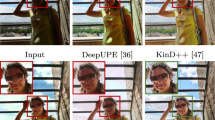Abstract
With nanometric spectral resolution and number of bands as high as 220, Hyper spectral sensors like Hyperion and AVIRIS are gaining wide appreciation. Narrow, continuous wavelength of bands upon a vast spectrum of electromagnetic wavelength enables better precision in identification of materials by distinguishing between their unique spectral signatures. However, their poor spatial resolution is a major impediment in realising the full potential of hyperspectral imaging. Efforts are being made worldwide to improve the spatial resolution of hyperspectral imagery by fusing them with registered panchromatic imagery of higher resolution. However, most of the conventional methods fail to preserve the spectral fidelity of the fused images due to severe color distortion. Here, we propose an efficient paradigm to sharpen hyperspectral imagery with high spatial information content and minimal color distortion using color normalization by Lαβ and intensity image generation using Spectral Mixture Analysis. Quantitative assessment indices have been calculated to prove that our method is superior in terms of minimization of color distortion and maximization of spatial details as compared to other methods.



Similar content being viewed by others
References
Ardouin, J. P., Lévesque, J., Roy, V., Chestein, Y. V., & Faust, A. (2007). A demonstration of hyperspectral image exploitation for military applications. In International Conference of Information Fusion (pp. 1–8).
Beck, R. (2003). EO-1 User Guide. USGS Earth Resources Observation Systems Data Center (EDC). http://eo1.gsfc.nasa.gov/EO1userguidev2pt320030715UC.pdf. Accessed 15 March 2015.
Licciardi, G.A., Villa, A., Khan, M.M., & Chanussot, J. (2012). Image fusion and spectral unmixing of hyperspectral images for spatial improvement of classification maps. In IEEE International Geoscience and Remote Sensing Symposium (IGARSS) (pp. 7290–7293).
Pearlman, J., Carman, S., Segal, C., Jarecke, P., Clancy, P., & Brown, W. (2001). Overview of the hyperion imaging spectrometer for the NASA EO-1 Mission. IGARSS, 6, 3036–3038.
Pohl, C. (1999). Tools and methods for fusion of images of different spatial resolution. International Archives of Photogrammetry and Remote Sensing., 32Part 7–3–4. W6. Valladolid: Spain.
Pohl, C., & Van Genderen, J. L. (1998). Multi-sensor image fusion in remote sensing: concepts, methods and applications. International Journal of remote sensing., 19(5), 823–854.
Rees, W. G. (1990). Physical principles of remote sensing (2nd ed.). Cambridge: Cambridge University Press.
Reinhard, E., Ashikhmi, M., Gooch, B., & Shirley, P. (2001). Color transfer between images. IEEE Computer Graphics and Applications., 21(5), 34–41.
Ruderman, D. L., Cronin, T. W., & Chiao, C. C. (1998). Statistics of cone responses to natural images: implications for visual coding. Journal of Optical Society of America., 15(8), 2036–2045.
Schowengerdt, R. A. (1997). Remote sensing: Models and methods for image processing (3rd ed.). San Diego: Academic press.
Wald, L. (2000).Quality of high resolution synthesised images: Is there a simple criterion? In Proceedings of the third conference Fusion of Earth data: merging point measurements, raster maps and remotely sensed images (pp. 99–103).
Yang, W., Chen, J., Matshushita, B., Shen, M. G., & Cehn, X. H. (2010). Practical image fusion method based on spectral mixture analysis. Science China Information Sciences., 536, 1277–1286.
Zhang, Y. (2002). Problems in fusion of commercial high-resolution satellite data as well as LANDAT 7 images and initial solutions. In Symposium on Geospatial Theory, Processing and Applications.
Zhang, Y. (2004). Understanding image fusion. Photogrammetric Engineering and Remote Sensing., 70(6), 657–661.
Zoran, L. V. (2009). Quality evaluation of multiresolution remote sensing images fusion. UPB Scientific Buletin Series, 71(3), 37–52.
Author information
Authors and Affiliations
Corresponding author
About this article
Cite this article
Baisantry, M., Khare, A. Pan Sharpening for Hyper Spectral Imagery Using Spectral Mixing-Based Color Preservation Model. J Indian Soc Remote Sens 45, 743–748 (2017). https://doi.org/10.1007/s12524-016-0643-9
Received:
Accepted:
Published:
Issue Date:
DOI: https://doi.org/10.1007/s12524-016-0643-9




